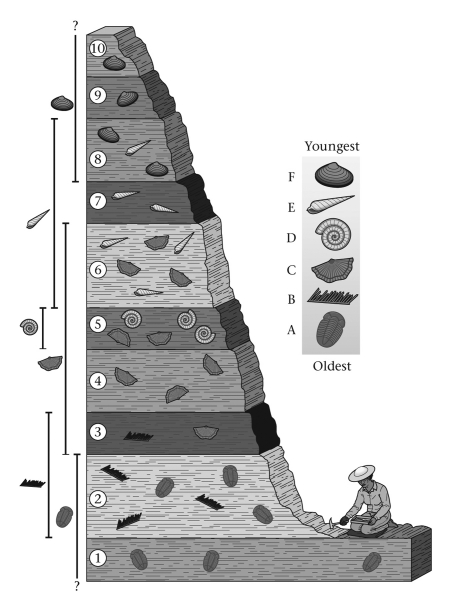

The Principle of Superposition states : In an otherwise undisturbed sequence of sedimentary strata, or rock layers, the layers on the bottom are the oldest.

Stratigraphy is the study of layered sedimentary rocks. If fragments of one rock type are observed as inclusions within another rock type, the first rock type had to exist prior to the rock type that hosts its inclusions. In order to understand the structural diagrams we will use in this module, it is necessary to remember two principles of stratigraphy.The law of faunal succession states that fossil species succeed one another in undisturbed rocks in a definite and recognizable order around the world.This rule applies also to mass wasting and erosion whatever is eroded had to exist prior to the beginning of erosion. The principle of superposition: this principle states that in an undisturbed sequence of sedimentary rocks, the oldest layers are at the bottom and the. Any rock that cross‐cuts another rock is younger than the rock it cross‐cuts.

Any layered sequences that are now tilted were moved by later geologic processes. The law of original horizontality states that most sedimentary rocks (an exception is cross‐bedded sediment) formed as nearly horizontal layers.The law of superposition states that in an undisturbed sequence of sedimentary rocks or lava flows the overlying rock is younger than the underlying rock.As previously described in this book, geologists use some basic, simple principles to unravel “which came first”:


 0 kommentar(er)
0 kommentar(er)
